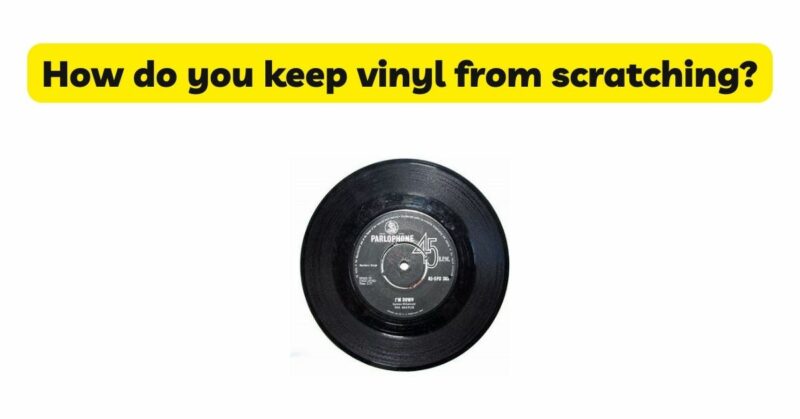Vinyl records have experienced a resurgence in popularity due to their warm, rich sound and tactile appeal. However, one concern that vinyl enthusiasts often have is how to prevent scratches on their cherished records. Scratches can degrade sound quality and diminish the overall listening experience. In this article, we will explore various strategies and best practices to help you keep your vinyl records in pristine condition, protecting them from scratches and ensuring optimal sound quality for years to come.
Understanding the Vulnerability of Vinyl Records: Vinyl records are delicate and susceptible to scratches due to their composition. They consist of a thin, grooved surface that holds the audio information. Any physical damage, such as scratches, can cause the stylus to jump or skip, leading to distortion, pops, and clicks. It is important to adopt proper handling techniques and implement preventive measures to safeguard your vinyl collection.
Proper Handling and Storage: a. Always handle vinyl records with clean hands to avoid transferring oils, dirt, or debris onto the surface. b. Hold records by their edges or the inner label area to minimize contact with the playing surface. c. Use record inner sleeves made of anti-static material to protect the record surface from dust and static buildup. d. Store records vertically in sturdy record storage units or shelves to prevent warping and ensure even weight distribution.
Cleaning and Maintenance: a. Regularly clean your records to remove dust, dirt, and debris that can cause scratches during playback. Use a record cleaning brush or anti-static record cleaning solution along with a microfiber cloth for gentle cleaning. b. Invest in a record cleaning machine or consider professional record cleaning services for a more thorough and deep cleaning of your vinyl collection. c. Avoid touching the playing surface of the record when cleaning. Hold records by their edges or use a record cleaning clamp to secure them during the cleaning process.
Proper Turntable Setup and Calibration: a. Ensure that your turntable is properly set up and calibrated to minimize tracking errors and excessive stylus pressure. Incorrect setup can cause unnecessary wear and tear on your records, leading to scratches and groove damage. b. Check and align the cartridge and stylus according to the manufacturer’s instructions. Proper alignment ensures accurate tracking and reduces the risk of scratches caused by misalignment.
Use High-Quality Turntable Components: a. Invest in a high-quality turntable with a precision tonearm and an adjustable counterweight. These features allow for accurate tracking force adjustment, reducing the risk of excessive pressure on the stylus and the record surface. b. Choose a high-quality cartridge and stylus that are suitable for your turntable. Opt for options known for their tracking ability and gentle stylus tip design, minimizing the potential for scratches.
Keep the Turntable Area Clean: a. Maintain a clean environment around your turntable. Dust, dirt, and other particles can find their way onto your records during playback, potentially causing scratches. b. Use a dust cover or record sleeves to protect your records from airborne particles when they are not in use. c. Keep pets away from the turntable area to prevent accidental scratches caused by their curious nature or shedding fur.
Mindful Needle Drops and Cueing: a. When starting playback, gently lower the stylus onto the record surface using the cueing lever or arm. Avoid dropping the stylus abruptly, as it can cause damage to the grooves and result in scratches. b. Use the cueing lever or arm to lift the stylus off the record when finished playing. This prevents accidental scratches that can occur if the stylus drags across the record surface.
Avoiding Cross-Contamination: a. Be cautious when using vinyl record cleaning solutions. Ensure that the cleaning solutions and cleaning cloths are free from contaminants that could potentially scratch the record surface. b. Use separate cleaning brushes or cloths for each record to prevent cross-contamination of dirt or debris.
Conclusion: Taking proactive steps to prevent scratches on your vinyl records is essential for maintaining their sound quality and prolonging their lifespan. By adopting proper handling techniques, implementing effective cleaning and maintenance practices, and using high-quality turntable components, you can significantly reduce the risk of scratches and enjoy your vinyl collection for years to come. Remember, a little care and attention go a long way in preserving the integrity of your records and ensuring a pristine listening experience every time you play them.


